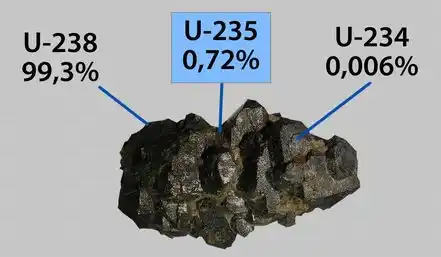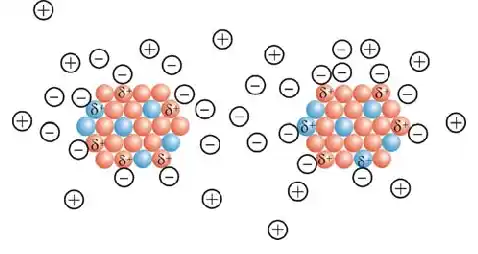افشین رشید
اُستادیار ؛ عضو هیات علمی دانشگاه آزاد اسلامی واحد علوم و تحقیقات تهران
585 یادداشت منتشر شدهNuclear Electricity - The important and Stable isotope of Uranium ۲۳۸ (U۲۳۸) or Enriched Uranium in The Production of Nuclear Electricity.

Note: The more abundant uranium-238 is sometimes called fertile. Fission occurs relatively rarely, and even under bombardment with high-energy neutrons, the probability of fission is very low. What happens more often is that the absorption of a neutron causes the nucleus to become unstable. After a few days, uranium-239 decays into plutonium-239, a highly fissile radioisotope of plutonium-239 that can be used to generate electricity and can also be used as nuclear fuel or a material for generating atomic power.
To produce (nuclear electricity), unstable materials are given energy to become stable. They are usually fissile elements with atomic masses above 150, 235U and 238U are found in mines. 99.3% of uranium in mines is 238U; and only 0.7% is uranium-235. On the other hand, uranium-235 interacts with hyperthermal neutrons.

Uranium 238U only works with fast neutrons, but it doesn't work well; therefore, in industry and in nuclear power plants, uranium-235 is used as the main fuel; but because it is rarely found in nature. Uranium enrichment must be used, that is, the concentration of uranium 235 should be increased from 0.7% to 1 to 3%. This increases the energy density in the fuel and increases the useful life of the fuel rods.

Many of the products of nuclear fission are highly unstable, and as a result, the reactor core contains large amounts of high-energy neutrons, gamma rays, beta particles, and other particles. Any object placed in the reactor is bombarded with all this variety of radiation. One use of reactor radiation is to produce plutonium-239. This isotope, which has a half-life of about 24,000 years, is found in small quantities on Earth. Plutonium-239 is similar to uranium in terms of fissionability. To produce plutonium-239, uranium-238 is first placed in the reactor core, which reacts to produce uranium-239. Uranium-239 is an unstable isotope that decays to neptunium-239 with a half-life of about 24 minutes by emitting a beta particle. Neptunium-239 also decays with a half-life of 2.4 days and the emission of a beta particle, becoming the final product, plutonium-239. In this case, plutonium-239 is still mixed with some amounts of uranium-238, but since this mixture is composed of two different elements, it can be separated chemically.
Conclusion :
The more abundant uranium-238 is sometimes called fertile. Fission occurs relatively rarely, and even under bombardment with high-energy neutrons, the probability of fission is very low. What happens more often is that the absorption of a neutron causes the nucleus to become unstable. After a few days, uranium-239 decays into plutonium-239, a highly fissile radioisotope of plutonium-239 that can be used to generate electricity and can also be used as nuclear fuel or a material for generating atomic power.